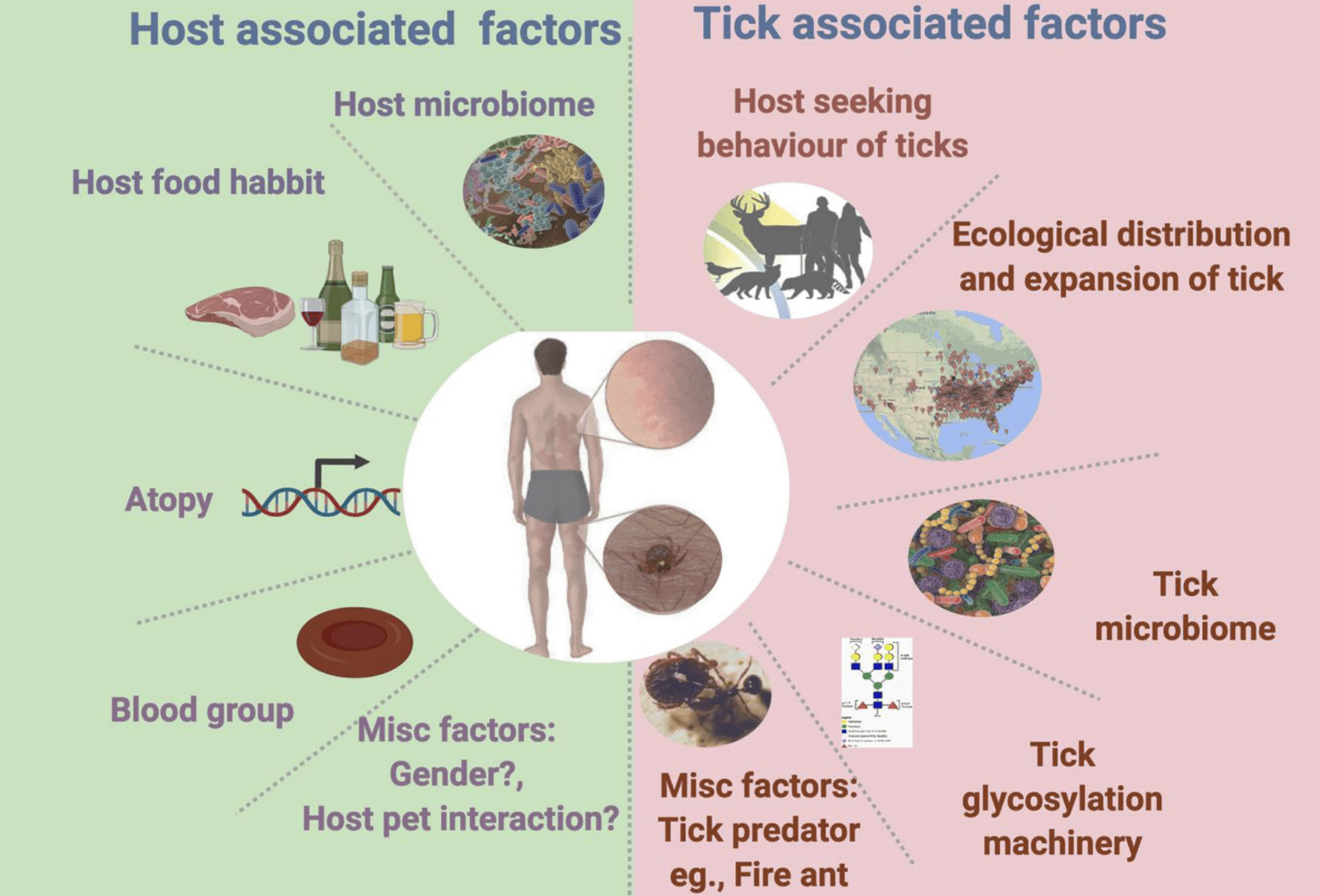
Alpha-Gal Syndrome is a peculiar disease. While it has affected thousands of patients across the US and Canada and carries long-lasting implications, recent reports show that over 40% of doctors have never even heard of it. With cases on the rise and an increasing level of media attention, there’s a growing demand for accurate and timely information about Alpha-Gal Syndrome, how it is transmitted, and how best to avoid it. Alpha-Gal is a potentially serious disease, so both domestic and international travelers should take appropriate precautions against it.
What is Alpha-Gal Syndrome?
Rather than a viral or bacterial disease–or even a fungal infection–Alpha-Gal Syndrome is effectively an extended immune response that leads to a lasting dietary allergy to many animal products. Alpha-Gal is primarily transmitted via tick bits, with the lone star tick being the most common vector in North America, predominantly in the Eastern US. However, Alpha-Gal has also been identified in Australia, Europe, the northern part of South America, and Eastern Canada.
The process of acquiring Alpha-Gal Syndrome typically runs like this: in search of nourishment, a tick lands on and bites a human. That tick bite and the feeding process, in turn, introduce a carbohydrate called galactose-alpha-1,3-galactose (hence the moniker “alpha-gal”) into the human host’s bloodstream. While the process of transmission isn’t fully understood, the end result is that the host’s body releases a series of IgE antibodies to fight the invading carbohydrate. These antibodies persist in the host’s system, attacking any instance of alpha-gals that occur.
This leads to further allergic reactions when the patient consumes food products containing alpha-gals and similar compounds. Food products like beef, pork, and dairy. Consumption of these foods, or other products made from mammals, including some medications, may lead to allergic reactions of varying degrees in severity.
Symptoms of Alpha-Gal Syndrome
Alpha-Gal syndrome may start to display symptoms fairly quickly after infection, and those symptoms may appear within 2-6 hours of consuming a food, medication, or other product derived from mammals. According to the CDC, symptoms of an Alpha-Gal Syndrome reaction may include the following:
- Hives or itchy rash
- Nausea or vomiting
- Heartburn or indigestion
- Diarrhea
- Cough, shortness of breath, or difficulty breathing
- Drop in blood pressure
- Swelling of the lips, throat, tongue, or eyelids
- Dizziness or faintness
- Severe stomach pain
It is important to remember that this is only a list of potential symptoms and that the precise display of symptoms will vary from patient to patient. While Alpha-Gal Syndrome is normally not life-threatening, some patients may experience anaphylaxis and thus require immediate medical intervention. Given that 70 percent of Alpha-Gal reactions involve some level of immune distress, the disease may be especially dangerous to patients with other respiratory issues like asthma.
Prevention of Alpha-Gal Syndrome
Due to the interesting nature of this disease, a direct treatment or cure for Alpha-Gal Syndrome is not available at the time of this writing. Research is ongoing, but for now, the best approach to Alpha-Gal is to avoid infection. Preventing Alpha-Gal infection means avoiding ticks and preventing tick bites. Toward that end, the following precautions may be useful:
- Avoid areas ticks are likely to inhabit, including overgrown, brushy, or heavily wooded areas. Even in residential neighborhoods, areas of high grass may be home to ticks.
- Take special precautions in regions that are particularly prone to ticks and tick-borne illness, like the northeastern US.
- If partaking in outdoor activities like camping, hiking, or picnicking in areas where Alpha-Gal is present or which may host ticks, use an EPA-approved insect repellent to help keep them away. Be sure to apply it appropriately, per the manufacturer’s instructions and EPA recommendations.
- After outdoor activities, examine yourself, your gear, and your pets for ticks or signs of tick bites
- If you see a tick, remove it immediately.
Preventing an Alpha-Gal Syndrome reaction from occurring in an infected patient means avoiding products derived from mammals whose tissues contain alpha-gals and thus trigger the immune response. This can be more difficult than it might seem. While it means abstaining from foods like beef, mutton/lamb, pork products, and dairy, it may also mean avoiding foods that contain animal-derived gelatines. Some medications–including the blood thinner Heparin and plasma expanders–may trigger a similar reaction. Patients dealing with Alpha-Gal Syndrome should keep their healthcare providers informed of their needs.
The Future of Alpha-Gal Syndrome
If you suspect that someone has contracted Alpha-Gal syndrome, the best response is to contact a physician. Mild to moderate symptoms of an Alpha-Gal reaction may be treated with an OTC antihistamine, but if symptoms begin to grow serious–difficulty swallowing or breathing are particularly dangerous signs–seek immediate medical care. Alpha-Gal Syndrome is making headlines, but still little understood. It’s of grave concern to meat lovers everywhere but relatively unknown amongst medical professionals. With estimates of the number of infected persons in the US ranging up to 450,000 individuals, there is cause for caution but not concern. Avoiding ticks and preventing tick bites is the best course of action, along with staying informed when traveling, working, or playing in areas that may host such ticks.
